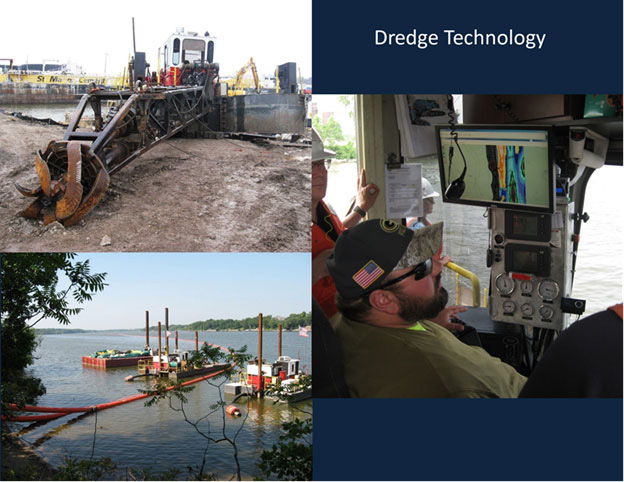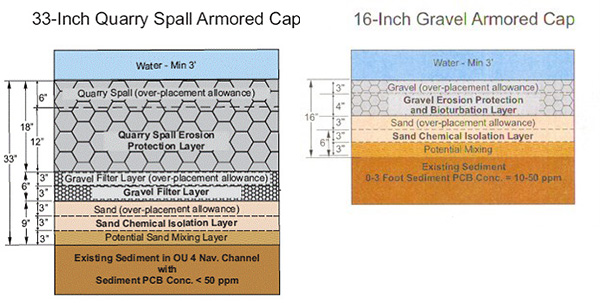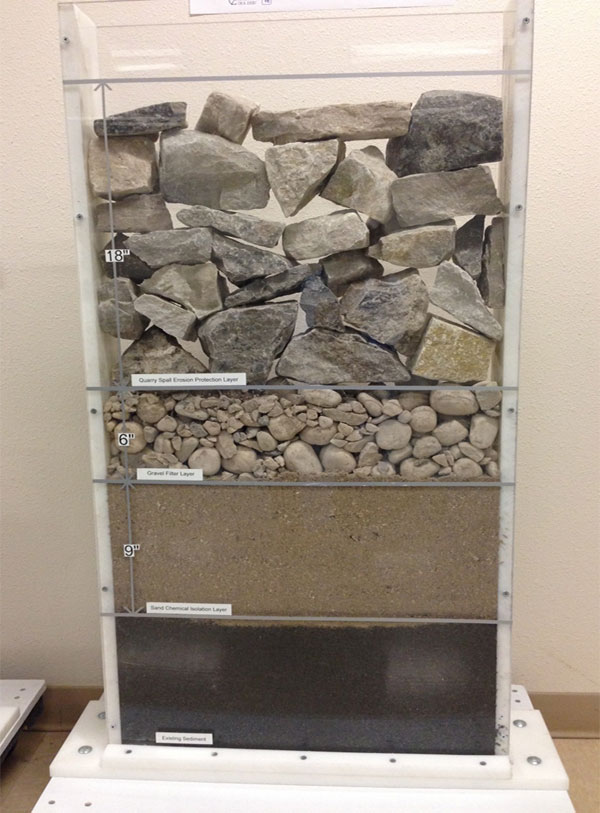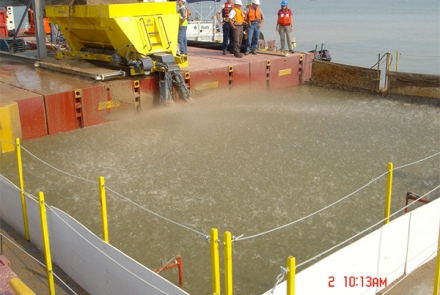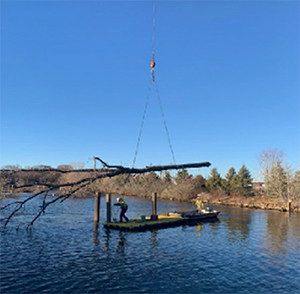Project Background
The Lower Fox River runs 39 miles from Lake Winnebago to the bay of Green Bay in northeast Wisconsin. The Lower Fox River basin was home to the highest concentration of pulp and paper mills in the world. Production and recycling of "carbonless copy paper," invented in the 1950s, led to the release of toxic chemicals called polychlorinated biphenyls (PCBs) in wastewater discharged to the river. PCB contamination moved downstream to the bay and Lake Michigan, affecting the Great Lakes freshwater system. By 1979, PCBs were banned by the federal government based on health risks to humans and wildlife. Discharges of PCBs to the Lower Fox River stopped, but PCBs persisted in river sediments and the food chain, which led the government to require a robust cleanup by the responsible parties.
PCB Information
PCBs are a group of chemicals created by the company Monsanto in the 1920s. They were used in electrical equipment, industrial processes and in the manufacture and recycling of carbonless copy paper. Fifty years later, in 1979, PCBs were banned by the EPA due to the human health and ecological risks they pose. Since PCBs are fat-soluble, they are stored in the body for a long time. PCBs are known to cause developmental, immunological, reproductive and neurobehavioral problems and cancer in animals, including humans.
PCBs bind readily to river and bay sediments and do not easily dissolve in water. They settle to the bottom where small organisms eat them. PCBs go up the food chain in a process called bioaccumulation where the small organisms are eaten by fish, which are in turn eaten by other animals such as waterfowl, birds of prey, mink and humans. Bioaccumulation or biomagnification causes the PCB concentrations to increase up the food chain.
Cleanup Project
In 1998, the U.S. Environmental Protection Agency (EPA) proposed adding the Lower Fox River and Green Bay to the list of Superfund sites to be cleaned up in accordance with the federal Comprehensive Environmental Response, Compensation, and Liability Act (CERCLA). While the river and bay were not formally "listed" as a Superfund site, the federal government issued a CERCLA cleanup order to several responsible parties (RPs) who manufactured or recycled carbonless copy paper that contained PCBs or otherwise contributed PCBs to the river. Most RPs settled with the government over the years to fully resolve their liabilities, and three RPs remained active during the final years of dredging: NCR, P.H. Glatfelter and Georgia Pacific.
Three active RPs worked collaboratively with the government oversight agencies team to complete the cleanup and continue to work on long-term monitoring. The RPs also pay government oversight costs. The EPA is the lead enforcement agency and the DNR is the lead technical agency performing oversight of all work done on the project.
The PCB cleanup project reduced the risk to human health and the environment primarily by remediating PCB-contaminated sediment greater than 1 part per million (ppm) from the Lower Fox River. The active remediation methods used in this multi-decade project included dredging, capping and sand covers. Some areas of the river and bay did not include active remedial activities due to lower PCB contamination. Called "Monitored Natural Recovery" areas, they are still monitored for recovery as cleaner sediment settles in the area.
The active cleanup work began in 2004. By the end of 2020, all dredging, capping and sand-covering work was complete. Long-term monitoring and cap maintenance will continue for the foreseeable future.
Dredging And Capping
The active remedial action methods chosen for the Lower Fox River cleanup were a combination of dredging, capping and sand covering. Hydraulic dredging removes sediment from the riverbed and pumps it to a processing facility where it is dewatered and the water receives advanced treatment. Sand is separated from the sediment because PCBs bind primarily to silt and clay and not sand. The dewatered sediment is transported to a licensed landfill, the separated sand is beneficially reused or landfilled and the treated water is returned to the river. The Hickory Meadows Landfill in Calumet County and Ridgeview Landfill in Manitowoc County both accepted material from this project.
Capping
Capping generally took place along the river where dredging was less feasible. Capping is the placement of specifically designed thicknesses and sizes of sand, gravel and armor stone to permanently contain contaminated sediment in place. All caps were engineered to isolate the PCBs from entering the water and food chain. Cap designs vary by specific site conditions. The image diagram below shows two types of caps used on the project, a 33-inch cap and a 16-inch cap. Cap locations are available in the Remedial Action Summary Reports on the Fox River Project Documents page.
Sand Cover
Sand cover was used to reduce PCB concentration below 1 ppm, either as a primary remedy or after dredging if low residual PCB concentrations remained. The sand effectively reduced the PCB concentration at the surface of the river bottom, thereby reducing risk. Special-grade sand was spread uniformly to settle evenly on the river bottom.
For more information about cleanup activities, see the Cleanup Operation page.
Fox River NRDA
The Natural Resource Damage Assessment (NRDA) is authorized under federal law to assess the effect of hazardous substances on natural resources. The Fox River Natural Resource Trustee Council focuses on the protection of the Lower Fox River and Green Bay ecosystems. It is comprised of the DNR, the U.S. Fish & Wildlife Service, the Oneida Nation of Wisconsin and the Menominee Indian Tribe of Wisconsin. The Trustees play an important role in restoring natural resources for both recreational use and wildlife health. Since 2002, NRDA settlements have contributed $90 million to compensate for natural resource damage caused by PCBs.
More information can be found on the Fox River NRDA website [exit DNR].
Habitat Replacement
During the process of dredging and capping, material considered fish and wildlife habitat was removed from the river. State and federal guidelines required the responsible parties to replace the removed habitat. Habitat replacement in the river is complete.

